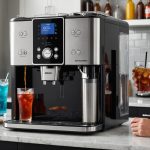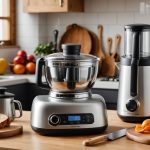Overview of Health and Safety in Commercial Kitchens
In commercial kitchens, health and safety regulations play a crucial role in food service operations. These regulations are designed to ensure the safety of both food and workers, minimizing risks associated with foodborne illnesses and workplace accidents. Compliance with these standards is mandatory and requires meticulous attention to various operational aspects.
Key regulatory bodies include local health departments and national food safety organizations, which set standards for cleanliness, equipment maintenance, and staff practices. Key regulations encompass areas such as personal hygiene, safe food storage, and the proper use of kitchen equipment. Adhering to these regulations helps mitigate risks and provide a safe environment for kitchen staff and customers.
Have you seen this : Crafting the Perfect Café: A Comprehensive Guide to Designing a Stunning and Practical Space
Failure to comply with these regulations can lead to severe consequences, including health code violations, fines, or even the closure of the establishment. For commercial kitchens, maintaining compliance is not just a legal obligation but a fundamental aspect of business operations. Non-compliance can heavily affect reputation and customer trust.
Understanding and implementing health and safety regulations is essential for kitchen managers. Regular training and audits can help in staying abreast of regulatory changes, ensuring that safety practices are continuously enhanced and maintained across all operations of a commercial kitchen.
Also read : Family Feast for All Ages: Crafting a Kid-Friendly and Adult-Approved Menu!
Conducting a Comprehensive Risk Assessment
Conducting a comprehensive risk assessment is pivotal in maintaining a safe commercial kitchen environment. The process involves a systematic examination to identify potential hazards that could cause harm.
First, gather a team knowledgeable about the kitchen operations. This team can efficiently identify and assess different hazards. Begin by observing daily activities. This helps pinpoint areas where risks are prevalent, such as slippery floors, hot surfaces, or sharp utensils.
Once hazards are identified, document the findings thoroughly. This record should include the nature of each hazard and the potential risks they pose. By carefully documenting these details, kitchen managers can create actionable plans to mitigate identified risks.
Analyzing the documented data is the next essential step. This involves evaluating the likelihood and severity of each risk. Through effective analysis, management can prioritize which hazards need immediate attention. Common kitchen hazards include:
- Cross-contamination of food surfaces.
- Improper storage leading to spoilage.
- Inadequate ventilation leading to heat stress.
Finally, implement appropriate measures to control the risks, ensuring that the workplace is as safe as possible. Regular reviews and updates of the risk assessment ensure continued compliance with safety standards, ultimately protecting both staff and customers.
Developing Food Handling Procedures
Establishing rigorous food safety practices is essential for preventing foodborne illnesses and ensuring customer safety in a commercial kitchen. Central to this is the development and implementation of safe food handling protocols that address all stages of food preparation.
Importance of Safe Food Handling
Understanding the significance of safe food handling cannot be overstated. Improper handling increases the risk of contamination and illness. By emphasizing and prioritizing safe practices, kitchens can minimize these risks significantly.
Key Practices for Food Safety
To ensure food safety protocols are effective, there are several critical control points during food preparation, including:
- Ensuring proper storage temperatures to prevent spoilage.
- Maintaining cleanliness of surfaces to avoid cross-contamination.
- Implementing handwashing and use of gloves.
Such practices not only meet compliance requirements but also protect consumers from potential hazards.
Implementing Procedures and Monitoring Compliance
Implementing these procedures requires thorough training of kitchen staff. Staff should be well-versed in food handling protocols and engage in regular updates to stay informed about the latest safety standards. Continuous monitoring and regular audits ensure that compliance is upheld. By training employees effectively and reviewing practices continually, commercial kitchens maintain a safe and compliant environment for all food preparation operations.
Ensuring Proper Hygiene Practices
Maintaining high hygiene standards in commercial kitchens is a cornerstone of safe food service operations. Given that improper sanitation can lead to foodborne illnesses, it’s crucial to implement rigorous sanitation protocols.
Key Hygiene Practices for Kitchen Staff
Kitchen staff must adhere to strict personal hygiene measures, including regular handwashing and wearing clean uniforms. This minimizes contamination risks and ensures that food remains safe for consumption.
Cleaning and Sanitizing Kitchen Equipment
Another critical component is the cleaning and sanitizing of kitchen equipment. All tools should be sanitized at regular intervals to prevent bacterial growth. Implementing scheduled cleaning routines helps maintain a hygienic workspace.
The importance of personal hygiene cannot be overstated; it’s vital for reducing contamination and protecting food quality. Staff should avoid touching their face, hair, or phones during food preparation to further reduce risks.
By following these hygiene practices, commercial kitchens create a safer environment for both employees and patrons. Regular training and audits are recommended to ensure adherence to hygiene standards. This proactive approach supports compliance and enhances overall kitchen safety, thereby maintaining customer trust and ensuring continued success.
Staff Training and Education Requirements
In the dynamic environment of commercial kitchens, robust staff training and employee education are paramount. Structured training programs enhance skills, improve safety, and ensure compliance with food safety standards. Such programs include initial onboarding and regular refresher courses tailored to kitchen operations.
Training Programs for Kitchen Staff
Comprehensive training programs cater to both new and seasoned staff, ensuring everyone is informed about updated procedures and regulations. They encompass safe food handling, equipment usage, sanitation practices, and emergency responses, providing a rounded approach to workplace safety.
Topics Covered in Safety Training
Safety training encompasses a variety of important subjects, including hygiene standards, cross-contamination prevention, proper storage techniques, and equipment handling. These critical topics ensure a holistic understanding of overall kitchen safety and efficiency.
Evaluating Training Effectiveness
Evaluating training effectiveness involves regular assessment to measure knowledge retention and identify areas for improvement. Methods include quizzes, practical assessments, and observation of daily practices. Effective evaluation ensures that staff not only understand protocols but can implement them, fostering a culture of safety and compliance.
Regularly updating training in response to regulatory changes and new risks is vital for maintaining a safe kitchen environment. With continuous learning, commercial kitchens enhance their operational standards and prioritize the well-being of both employees and patrons.
Implementing Emergency Protocols
In a commercial kitchen, emergency preparedness is vital to ensure swift and efficient crisis management. Emergencies can range from small kitchen fires to natural disasters. Therefore, it’s essential to develop a comprehensive emergency response plan detailing clear actions for different scenarios.
Creating an Emergency Response Plan
An effective plan begins with identifying potential emergencies that could disrupt kitchen operations. These emergencies may include fires, electrical failures, gas leaks, or medical incidents. Once identified, specific procedures should be established for each type of emergency, ensuring staff know precisely how to respond.
Training Staff on Emergency Procedures
Training is crucial for effective emergency preparedness. Regular drills help familiarize employees with the response plan, encouraging quick and orderly actions during actual emergencies. Training sessions should cover the operation of safety equipment such as fire extinguishers, evacuation routes, and communication protocols.
Types of Emergencies in Commercial Kitchens
Understanding the diverse emergencies that could occur is essential. Kitchens are prone to fires from unattended cooking or grease buildup, while gas leaks and equipment malfunctions represent other critical risks. In training, emphasize these possibilities, underlining the importance of swift and appropriate actions.
By prioritizing crisis management and ensuring all staff are well-prepared, a commercial kitchen can maintain safety, protect assets, and minimize disruptions, reinforcing a responsive and resilient working environment.
Legal Considerations and Compliance
In the operation of commercial kitchens, understanding and adhering to legal requirements is essential. Kitchen managers are responsible for ensuring compliance with a myriad of regulatory standards, which play a pivotal role in maintaining both food safety and workplace safety.
Overview of Legal Responsibilities
Commercial kitchens must ensure that they comply with local health department regulations. These regulations encompass ensuring sanitary conditions, proper food storage, and safe handling procedures. Adherence helps prevent foodborne illnesses and protects the wellbeing of employees. Managers must stay informed on updates and changes to these regulations, integrating them promptly into daily operations.
Understanding Local Health Department Regulations
Health department regulations vary by region but typically include guidelines for maintaining cleanliness and operational safety. Regular inspections by health officials ensure compliance, and violations can result in penalties. Kitchen managers should establish internal review processes to self-audit compliance as an ongoing practice.
Consequences of Failing to Comply
Non-compliance with regulatory compliance can lead to severe consequences, such as hefty fines, revocation of operating licenses, or closure. Beyond financial losses, breaches risk damaging the establishment’s reputation. Therefore, regular training and updates for all staff members on legal standards can mitigate risks, upholding both safety and business integrity.






